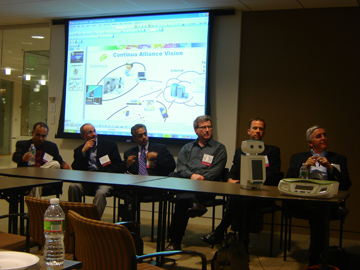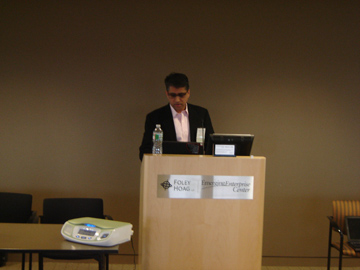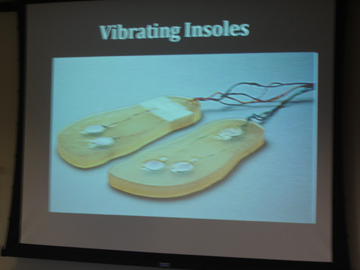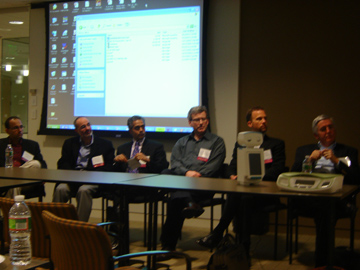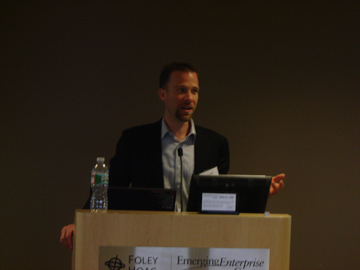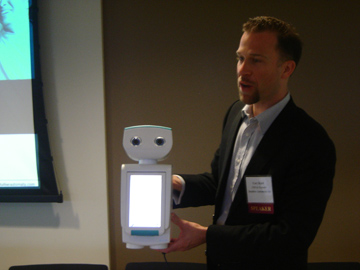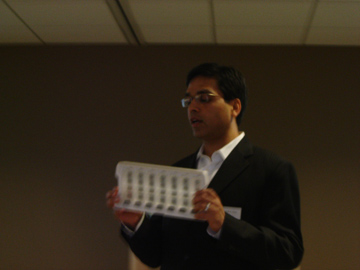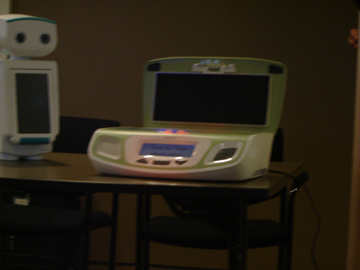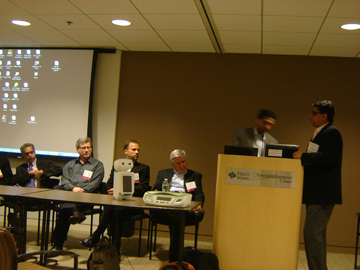Contribute
| Smart Medical Devices - What's On The Horizon? |
Anoop Kumar
04/29/2010
TiE Boston organized an informative panel of industry and academic experts on smart medical devices on April 1, 2010 at Foley Hoag Emerging Enterprise Center, Waltham, MA. The session was filled with interesting and entertaining demos showcasing some of the cutting edge products. The panel was organized by Anupendra Sharma, Investment Partner, Medical Fund, Siemens Venture Capital, Inc. and Tushneem Dharmagadda, Co-Chair, Special Interest Groups at The Indus Entrepreneurs, Inc. Sharma’s blog at http://anupendra.blogspot.com/2010/04/smart-medical-devices-panel.html and Dharmagadda’s blog at http://tushneem.wordpress.com/2010/04/02/takeaways-smart-medical-devices/ do an excellent job summarizing the takeaways from the session.
The panelists included:
John Brooks, Founder, Prism Ventureworks &, CEO, Reflectance Medical
Robert Farra, Vice President, Research & Development, MicroCHIPS Inc.
Sridhar Iyengar, CTO, Agamatrix, Inc.
Cory Kidd, CEO & Founder, Intuitive Automata Inc.
Tom O Dwyer, Director, Healthcare, Analog Devices Inc.
Rahul Sarpeshkar, Innovator & Associate Professor, MIT
Startup Showcase: Yogendra Jain, Senticare
“Smart Medical Devices†are the new type of medical devices that sense key medical parameters, such as blood pressure, blood sugar, cholesterol, which are important for clinicians, analyze these data and may implement results. The implementation may be clinical guidance, taking necessary action for instance delivering medicine or sending message to caretaker. While a few devices are already in the market there is tremendous opportunity for innovation and entrepreneurship.
Anupendra Sharma placed these devices into six categories; non-invasive sensors, invasive/implantable and programmable sensors, robots, home health, hospital equipment, and smart phones.
Another aspect of the session was new technologies that could revolutionize the industry. Tom of Dwyer, Director, Healthcare at Analog Devices Inc highlighted how some of the devices have got cheaper and smaller. For example, a camera costs $2, motors and accelerometers cost about $2.50. This has opened the doors for entrepreneurs to build innovative products by combining these miniature devices. Rahul Sarpeshkar, Innovator & Associate Professor, MIT, described his breakthrough research on low power systems. By mimicking cells, Sarpeshkar designs electronic circuits for ultra-low-power and biomedical applications. The technology can have very broad impact, ranging from cars to small devices.
You may also access this article through our web-site http://www.lokvani.com/
